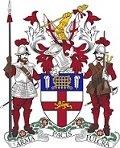British Army, Honourable Artillery Company Journal 1923-2021 Browse
If your ancestor served in the Honourable Artillery Company you’ll want to browse the Honourable Artillery Company Journal. Launched in 1923, this regimental journal also covers events from much earlier in the regiment’s history.
See description
If your ancestor served in the Honourable Artillery Company you’ll want to browse the Honourable Artillery Company Journal. Launched in 1923, this regimental journal also covers events from much earlier in the regiment’s history.
Regimental journals provide fascinating coverage of the regiment at given points in its history. The Honourable Artillery (HAC) was established by Royal Charter in 1537 and can claim to be the oldest British regiment. It was not until 1923, however, that the regiment first published its journal giving an account of its activities.
The first issue, Vol I, No I was published in October 1923 and included an overview of the regiment’s service during the First World War; a poem by Private E N Farnell written in Italy in 1918; an account of the HAC from 1784; notes and reflections on the annual camp at Trawsfynydd in May 1923; minutes of the Courts of Assistants from January 1656; a tribute to Lt Col E C P Boyle who had been killed in action in February 1917; notes on the “Five Cups” competition and a photograph of the winning team, with all team members named; and so on.
If you ancestor served with this regiment, you will certainly want to read these journals but do be warned, rabbit holes are frequent and you could easily spend hours poring over this fascinating material.
The First World War was still very fresh in people’s minds when the Honourable Artillery Company Journal first went to press in October 1923, and early numbers include a lot of detail about the regiment’s activities during the war years. A regular feature in those early editions is a column called “Absent Comrades”, which focuses on HAC member who died during the Great War.
The issued for February 1924 features Captain Ernest Francis Hume Murray MC DCM as an ‘Absent Comrade’ and his post-nominals immediately signal that he was both an ‘other rank’ and an officer. He had joined the HAC in 1910 and was a sergeant by the time he proceeded overseas with the 1st Battalion in September 1914. He was awarded the Distinguished Conduct Medal (DCM) for gallantry at Hooge in June 1915, and was subsequently commissioned in 1916, serving with the 2nd Battalion. He was killed in action on the 19th October 1917, being mentioned in dispatches and awarded a posthumous Military Cross. A photograph of him accompanies the full page article.
